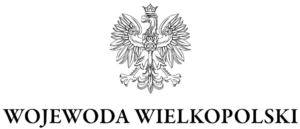17.08.2020 – Cultural differences – avoiding uncertainty
One of six dimensions of culture identified by Dutch sociologist Geert Hofstede is avoiding uncertainty. This dimension is related to the level of anxiety in society due to threats to the future in new, unknown and uncertain situations.
Avoiding uncertainty, which is measured from weak to strong, is an indicator showing society’s attitude to uncertainty about the future.

In societies with high uncertainty avoidance index, change is perceived as a threat, and religion and strict social norms and detailed laws play an important role. In such societies there is a low level of tolerance, for people who differ. In such countries the initiative in the workplace is not welcome. Conflicts are seen as a threat to relations, not as a way of solving problems.
In societies with low uncertainty avoidance index, people are ready for change, they can easily see new trends or take risks. They also actively manifest their position or dissimilarity.
In countries with low uncertainty avoidance index, people are more likely to take risks.

Feeling of uncertainty is manifested, among other things, by stress and the need for predictability, which is satisfied by all regulations, laws or customs. People from countries with high levels of uncertainty do not like ambiguous situations and expect clear structures.
Table 1. Differences between societies with weak and strong uncertainty avoidance
| Strong uncertainty avoidance | Weak uncertainty avoidance |
| Uncertainty is a constant threat that must be fought. | Uncertainty is a natural part of life – life must be taken as it is. |
| High stress levels and subjective feelings of anxiety. | Low stress and lack of anxiety. |
| At the right time and place one can canalise aggression. | Aggression and anxiety should not be openly demonstrated. |
| Different means dangerous. | Different means interesting. |
| More concern for health and money. | Less concern for health and money. |
| Strong emotional need to frame everything within laws and regulations. | Number of rights and provisions should be kept to the minimum necessary. |
| Strong need to be constantly busy, hard work is an internal need. | Positive attitude to inactivity, hard work is a necessity. |
| Repressions towards different behaviours and views, aversion to innovation. | Acceptance for different and innovative activities and ideas. |
| Main motivators are sense of security and sense of belonging. | Main motivators are achievements and recognition. |
Source: https://mfiles.pl/pl/index.php/Badanie_Geerta_Hofstede
Among the sources of variation in the uncertainty avoidance dimension, the historical background as well as the wealth of a given society can be indicated – the higher the higher the lower the uncertainty avoidance rate.
The highest uncertainty avoidance index is recorded in Latin America – Guatemala (98), Uruguay (98), Peru (87), Mediterranean countries – Greece (100), Portugal (99), Malta (96), Russia (95), Poland (93), Japan (92) and South Korea (85). Low uncertainty avoidance rates have been reported in Singapore (8), Hong Kong (29), Vietnam (30) or China (30) and the Anglo-Saxon countries – The United States (46), The United Kingdom (35), Ireland (35), Canada (48) and the Scandinavian countries – Denmark (23), Sweden (29).
Uncertainty avoidance on the example of chosen countries – high score means a society with a high rate of uncertainty avoidance.

Source: own study based on https://www.hofstede-insights.com
Poland with a score of 93 points has a very high degree of uncertainty avoidance. People have an inner need to work hard, precision and punctuality are the norm, safety is an important element of individual motivation to act or not to act.
Bibliography for a series of articles on cultural differences:
„Cudzoziemcy w Polsce. Podręcznik dla osób pracujących z imigrantami”, red. M. Budyta-Budzyńska, Caritas Polska, Warszawa 2020
Skrypt na szkolenie „Praca z klientem cudzoziemskim”, A. Kosowicz, Caritas Polska, Warszawa 2020
„Cudzoziemcy w Polsce. Podręcznik dla osób pracujących z imigrantami”, red. M. Nowicka, Warszawa, Caritas Polska, Warszawa 2020
„Międzykulturowość w szkole, Poradnik dla nauczycieli i specjalistów”, Red. Kinga Białek, Ośrodek Rozwoju Edukacji, Warszawa 2015
„Kultury i organizacje”, G. Hofstede, G. J Hofstede, M. Minkov, Polskie Wydawnictwo Ekonomiczne, Warszawa 2011
Encyklopedia Zarządzania: https://mfiles.pl
https://mfiles.pl/pl/index.php/R%C3%B3%C5%BCnice_kulturowe
https://mfiles.pl/pl/index.php/Badanie_Geerta_Hofstede
https://www.helixpoland.com.pl/roznice-kulturowe-wg-geerta-hofstede/




